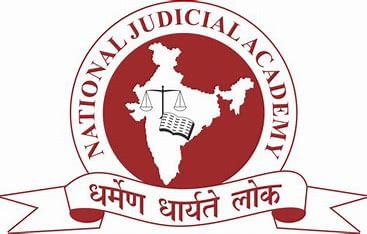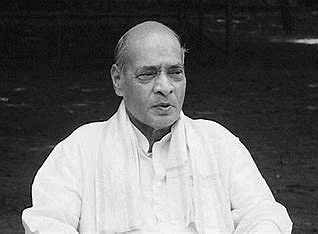UPSC Daily Current Affairs- 10th February 2024 | Current Affairs & Hindu Analysis: Daily, Weekly & Monthly PDF Download
GS-II
Preamble of the Indian Constitution
Subject: Polity and Governance

Why in News?
The Supreme Court of India recently agreed to examine whether the words "socialist" and "secular" can be removed from the Preamble of the Indian Constitution.
About the Preamble of the Indian Constitution:
- The preamble of the Indian Constitution serves as a brief introductory statement of the Constitution that sets out the guiding purpose, principles, and philosophy of the Indian Constitution.
- The Preamble is based on the Objectives Resolution, drafted and moved by Jawaharlal Nehru.
- The Preamble reveals four ingredients or components:
- Source of authority of the Constitution: It is indicated by the Preamble that the source of authority of the Constitution lies with the people of India.
- Nature of the Indian State: It declares India to be a sovereign, socialist, secular, and democratic republic.
- Objectives of the Constitution: The objectives stated by the Preamble are to secure justice, liberty, and equality for all citizens and promote fraternity to maintain the unity and integrity of the nation.
- Date of adoption of the Constitution: It stipulates November 26, 1949, as the date.
- Amendments: By the 42nd Amendment of 1976, the words “Socialist” and “Secular” were inserted; the Preamble now reads “Sovereign Socialist Secular Democratic Republic”.
- Interpretation by the Supreme Court:
- Berubari Union case: In this case, it was held by the Supreme Court that the Preamble is part of the Constitution. However, it recognised that the Preamble could be used as a guiding principle if a term in any article of the Constitution is ambiguous or has more than one meaning.
- Keshvananda Bharti v. State of Kerala: In this case, the Supreme Court overturned its earlier decision and held that the Preamble is a part of the Constitution and can be amended under Article 368 of the Constitution.
- Again, in the LIC of India case, the Supreme Court held that the Preamble is a part of the Constitution.
Source: Hindustan Times
Airports Authority of India (AAI)
Subject: Polity and Governance

Why in News?
The Supreme Court recently agreed to hear a curative petition filed by the Airports Authority of India (AAI) against the multinational conglomerate GMR Group concerning the operational management of Nagpur's Babasaheb Ambedkar International Airport.
About the Airports Authority of India (AAI):
- It is a statutory body under the Directorate General of Civil Aviation, Ministry of Civil Aviation, Government of India.
- It was constituted by an Act of Parliament and came into being on 1st April 1995, by merging the erstwhile National Airports Authority and the International Airports Authority of India.
- The merger brought into existence a single Organisation entrusted with the responsibility of creating, upgrading, maintaining, and managing civil aviation infrastructure both on the ground and in air space in the country.
- AAI manages 137 airports, which include 24 International Airports (including 3 International Civil Enclaves), 10 Customs Airports (including 4 Customs Civil Enclaves), 80 Domestic Airports, and 23 Domestic Civil Enclaves at Defence airfields.
- AAI also provides Air Traffic Management Services (ATMS) over the entire Indian Air Space and adjoining oceanic areas, with ground installations at all airports, and 25 other locations to ensure the safety of aircraft operations.
- The functions of AAI are as follows:
- Design, development, operation and maintenance of international and domestic airports and civil enclaves.
- Control and management of the Indian airspace extending beyond the territorial limits of the country, as accepted by the International Civil Aviation Organization (ICAO).
- Construction, modification and management of passenger terminals.
- Development and Management of cargo terminals at international and domestic airports.
- Provision of passenger facilities and an information system at the passenger terminals at airports.
- Expansion and strengthening of the operation area, viz. Runways, Aprons, Taxiway etc.
- Provision of visual aids.
- Provision of communication and navigation aids, viz. ILS, DVOR, DME, Radar etc.
Source: Live Law
National Judicial Academy (NJA)
Subject: Polity and Governance

Why in News?
If judges can go to the National Judicial Academy for training, why not lawyers, the Supreme Court said recently while asserting that all advocates should undergo compulsory training.
About the National Judicial Academy (NJA):
- NJA, established in 1993 under the Societies Registration Act, 1860, is an independent society, fully funded by the Government of India, and works under the directions of the Supreme Court of India.
- Mandate: Strengthening the Administration of Justice through Judicial Education, Research, and Policy Development.
- It organises training to aid the judges in their judging roles and in the performance of court administration work.
- Its 63-acre campus is located on the outskirts of Bhopal. It also has a registered office in Delhi.
- The Chief Justice of India (CJI) is the Chairman of the General Body of NJA as well as the Chairman of the Governing Council, the Executive Committee, and the Academic Council of NJA.
- Management:
- The Director, NJA is the Principal Executive Officer. The Director is appointed by the Chairman, the Hon'ble Chief Justice of India.
- NJA academic staff positions include, in addition to the Director, one position of Additional Director (Research), three positions of Professor, six positions of Assistant Professor, six positions of Research Fellow, and six positions of Law Associate.
Source: The Hindu
GS-III
Dr. M S Swaminathan conferred Bharat Ratna
Subject: Economy

Why in News?
Conferring of Bharat Ratna, the highest civilian honour of the country on late agricultural scientist, Dr M S Swaminathan.
Background:-
- This year’s tally of five Bharat Ratna awards is the highest that has ever been announced in a single year, one more than the four announced in 1999. The winners of the award are L.K Advani, Karpoori Thakur, M S Swaminathan, Narasimha Rao, Chaudhary Charan Singh.
About M.S.Swaminathan:-
- Born on August 7, 1925 in Kumbakonam, Tamil Nadu, Dr Mankombu Sambasivan Swaminathan is hailed as the father of India’s green revolution.
- Witnessing the Bengal famine of 1942-43 deeply impacted Dr Swaminathan.
- He served as an Independent Chairman of the Food and Agricultural Organisation Council (1981-85)
- He was the President of the International Union for the Conservation of Nature and Natural Resources (1984-90)
- He was also the President of the World Wide Fund for Nature (India) from 1989-96
- He served as the Director General of Indian Council of Agricultural Research (ICAR), among others.
Contribution to green revolution:
- The Basic strategic vision underpinning the Green Revolution in India — introducing a new genetic strain or ‘plant type’ responsive to increased fertiliser and water application — came from Swaminathan.
- The problem with the traditional wheat and rice varieties was that they were tall and slender. These ‘lodged’ – fell flat on the ground — when they grew and their earheads were heavy with well-filled grains produced in response to high fertiliser doses
- Swaminathan approached Norman Borlaug, who had incorporated dwarfing genes into wheat varieties in Mexico.
- India started working seriously on dwarf wheat breeding programme in 1963.
- His efforts transformed India from a food deficient nation to one with increased wheat production – from 6 million tonnes a year in 1947 to 17 million tonnes a year between 1964 and 1968.
Source: Indian Express
 |
Download the notes
UPSC Daily Current Affairs- 10th February 2024
|
Download as PDF |
High-altitude pseudo satellite vehicle (HAPS)
Subject: Science and Technology

Why in News?
THE NATIONAL Aerospace Laboratories (NAL) in Bengaluru has successfully completed the first test of a solar-powered “pseudo satellite”, a new age unmanned aerial vehicle (UAV)
Background:
- HAPS is a still-developing technology, and the successful test flight last week puts India among a very small group of countries currently experimenting with this technology.
About HAPS:
- The high-altitude pseudo satellite vehicle, or HAPS, can fly at altitudes of 18-20 km from the ground, almost double the heights attained by commercial airplanes.
- Due to its ability to generate solar power, it can remain in air for months, evenyears, offering it advantages of a satellite.
- It does not require a rocket to get into space, the cost of operating HAPS is several times lower than that of a satellite that is usually placed at least 200 km from the earth.
Need of HAPS
- Need for development of high-endurance, high-altitude flying instruments arose from the desire to have continuous surveillance of border areas, particularly in the wake of the Doklam standoff.
- Satellites placed in low-earth orbits and meant to observe the Earth usually move in their orbits and are not watching constantly.
- Solar-powered unmanned aircraft is considered a better solution.
Current State of Indias HAPS
- The test flight saw the scaled-down 23-kg prototype with a wing-span of about 12 metres, remain in air for about eight and a half hours, achieving an altitude of about 3 km.
- The next step is to make this vehicle fly for at least 24 hours.
- NAL will only develop the technology and a prototype. The manufacturing of the actual thing would happen with industry linkages.
Source: Indian Express
Sovereign gold bond scheme
Subject: Economy

Why in News?
Sovereign gold bone scheme, 2023-24 will open for subscription from 12 to 16 February 2024
Background:
- Floated by the Indian Government in 2015, Sovereign Gold Bonds or SGBs emerged as an innovative investment strategy involving gold for interested investors.
About SGBs:
- SGBs are provided as a substitute for physical gold to investors.
- The main objective of the scheme is to reduce the demand for physical gold and shift a part of the money spent for gold, which usually amounts to huge import bill into financial savings through Gold Bonds.
- SGBs are issued by RBI on behalf of the Government of India on payment of the required amount in rupees and are denominated in grams of gold.
- The Bonds are restricted for sale to resident Indian entities including individuals, HUFs, trusts, Universities, charitable institutions.
- Investors ineligible to participate in the SGB scheme include – Non-Resident Indians:Direct investment in SGB is not permitted for them, Foreign institutional investors (FII): investing in SGB is restricted for FIIs, minors: investment in SGB is only permissible through their guardians.
- The bonds are available in both in Demat and paper form. The rate for the Bonds is fixed on the basis of simple average of closing price for gold of 999 purity of the previous week published by the India Bullion and Jewellers Association (IBJA).
- The tenor of the Bond is for a period of 8 years with exit option from 5th year onwards to be exercised on the interest payment dates.
- Participants in the SGB scheme are entitled to a stable interest rate of 2.50 per cent per annum, disbursed semi-annually based on the nominal value of their investment.
- On maturity, the investor will get the equivalent rupee value of the quantum of gold invested at the then prevailing price of gold as calculated using the simple average of the closing price of 999 purity gold over the three preceding working days.
Source: Live Mint
Papikonda National Park
Subject: Environment

Why in News?
Recently, a lone male tiger safely entered its natural habitat of Papikonda National Park (PNP) from the Eluru district side.
About Papikonda National Park:
- It is located in Andhra Pradesh.
- The area plays a key role in high precipitation and the consequent origin of various small streams and rivulets which drain and enrich the perennial River Godavari.
- A unique dwarf breed of goat known locally as the “kanchu mekha” originates in this region.
- The national park has been recognized as an Important Bird and Biodiversity Area by BirdLife International.
- Vegetation:
- Dry Mixed Teak Forests, Southern dry mixed deciduous forests and Southern moist mixed deciduous forests.
- The predominant and most extensive forest type found in the park is Southern Tropical Dry Deciduous type and the species found in this type are mainly dry deciduous species.
- Flora: Some species of flora include Albizia Amara, Latifolia, Albizia Lebbeck, Terminalias, Tectona Grandis, Lagerstroemia Lanceolata, Tomentosa, Arundinacea, Bambusa, Albizzia Amara, Dendrocalamus Strictus, Pterocarpus among others.
- Fauna: Tiger, Leopard, Hyena and vulnerable bovidae the Indian gaur area. It has species like sambar, barking deer, chowsinga, spotted deer etc.
Source: The Hindu
|
39 videos|4541 docs|970 tests
|






























